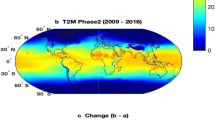Abstract
The wind-chill index (WCI), developed in Antarctica in the 1940s and recently updated by the weather services in the USA and Canada, expresses the enhancement of heat loss in cold climates from exposed body parts, e.g., face, due to wind. The index provides a simple and practical means for assessing the thermal effects of wind on humans outdoors. It is also used for indicating weather conditions that may pose adverse risks of freezing at subfreezing environmental temperatures. Values of the WCI depend on a number of parameters, i.e, temperatures, physical properties of the air, wind speed, etc., and on insolation and evaporation. This paper focuses on the effects of various empirical correlations used in the literature for calculating the convective heat transfer coefficients between humans and their environment. Insolation and evaporation are not included in the presentation. Large differences in calculated values among these correlations are demonstrated and quantified. Steady-state wind-chill-equivalent temperatures (WCETs) are estimated by a simple, one-dimensional heat-conducting hollow-cylindrical model using these empirical correlations. Partial comparison of these values with the published “new” WCETs is presented. The variability of the estimated WCETs, due to different correlations employed to calculate them, is clearly demonstrated. The results of this study clearly suggest the need for establishing a “gold standard” for estimating convective heat exchange between exposed body elements and the cold and windy environment. This should be done prior to the introduction and adoption of further modifications to WCETs and indices. Correlations to estimate the convective heat transfer coefficients between exposed body parts of humans in windy and cold environments influence the WCETs and need to be standardized.






Similar content being viewed by others
References
ASHRAE (American Society of Heating, Refrigerating and Air Conditioning Engineers) Handbook (1997) Fundamentals. In: Parsons RA (ed) ASHRAE, Atlanta, pp 8.1–8.28
Bluestein M (1998) An evaluation of the wind chill factor: its development and applicability. ASME Biomech Eng 120:255–258
Bluestein M, Zecher J (1999) A new approach to an accurate wind chill factor. Bull Amer Meteor Soc 80:1893–1899
Brauner N, Shacham M (1995) Meaningful wind chill indicators derived from heat transfer principles. Int J Biometeorol 39:46–52
Environment Canada (2001) Canada’s New Wind Chill Index. http://www.mb.ec.gc.ca/air/wintersevere/windchill.en.html
Hill L (1919) The science of ventilation and open air treatment. Part I Med Res Council Reports 32, London
Hill L (1920) The science of ventilation and open air treatment. Part II. Med Res Council Reports 52, London
Hill L (1923) The Kata-thermometer in studies of body heat efficiency. Med Res Council Spec Reports Ser 73, London
Hill L, Angus TC, Newbold EM (1928) Further experimental observations to determine the ratio between Kata-cooling power and atmospheric conditions. J Indusr Hygiene 10:391
Holman JP (1981) Heat Transfer. 5th Edn. McGraw-Hill, Tokyo
International Society of Biometeorology (2004) Commision 6: Development of a “Universal Thermal Climate Index” (UTCI). http://www.biometeorology.org.
Kessler E (1993) Wind chill errors. Bull Amer Meteor Soc 74: 1743–1744
Molnar GW (1958) An evaluation of wind chill. In: Cold injury, Proc. 6th Conf SM Horvath (ed) US Army Med Res Lab Fort Knox KY Capital City Press Montpelier VT 175–221
National Weather Service (USA) (2001) Wind chill temperature index. http://www.nws.noaa.gov/om/windchill/index.shtml
Osczevski RJ (1995a) Comments on “Wind chill errors”. Part II, Bull Amer Meteor Soc 76:1630–1631
Osczevski RJ (1995b) The basis of wind chill. Arctic 48:372–382
Osczevski RJ (2000) Windward cooling: an overlooked factor in the calculation of wind chill. Bull Amer Meteor Soc 81:2975–2978
Osczevski RJ, Bluestein M (2005) The new wind chill equivalent temperature chart. Bull Amer Meteor Soc 86:1453–1458
Ozisik MN (1985) Heat transfer—a basic approach. McGraw-Hill, New York
Siple P, Passel CF (1945) Measurements of dry atmospheric cooling in subfreezing temperatures. Proc Am Phil Soc 89:177–199
Tikuisis P, Osczevski RJ (2002) Dynamic model of facial cooling. J Appl Meteorol 12:1241–1246
Winslow CEA, Herrington LP, Gagge AP (1936a) A new method of partitional calorimetry. Am J Physiol 116:641–655
Winslow CEA, Herrington LP, Gagge AP (1936b) The determination of radiation and convection exchanges by partitional calorimetry. Am J Physiol 116:684–699
Winslow CEA, Herrington LP, Gagge AP (1937) Relations between atmospheric conditions, physiological reactions and sensations of pleasantness. Am J Hygiene 26:103–115
Winslow CEA, Gagge AP, Herrington LP (1940) Heat exchange and regulation in radiant environments above and below air temperature. Am J Physiol 131:79–92
Acknowledgement
This work was supported in part by the James (Jimmy) Belfer Chair in Mechanical Engineering at the Technion, Israel Institute of Technology, Haifa, Israel.
Author information
Authors and Affiliations
Corresponding author
Rights and permissions
About this article
Cite this article
Shitzer, A. Wind-chill-equivalent temperatures: regarding the impact due to the variability of the environmental convective heat transfer coefficient. Int J Biometeorol 50, 224–232 (2006). https://doi.org/10.1007/s00484-005-0011-x
Received:
Revised:
Accepted:
Published:
Issue Date:
DOI: https://doi.org/10.1007/s00484-005-0011-x




